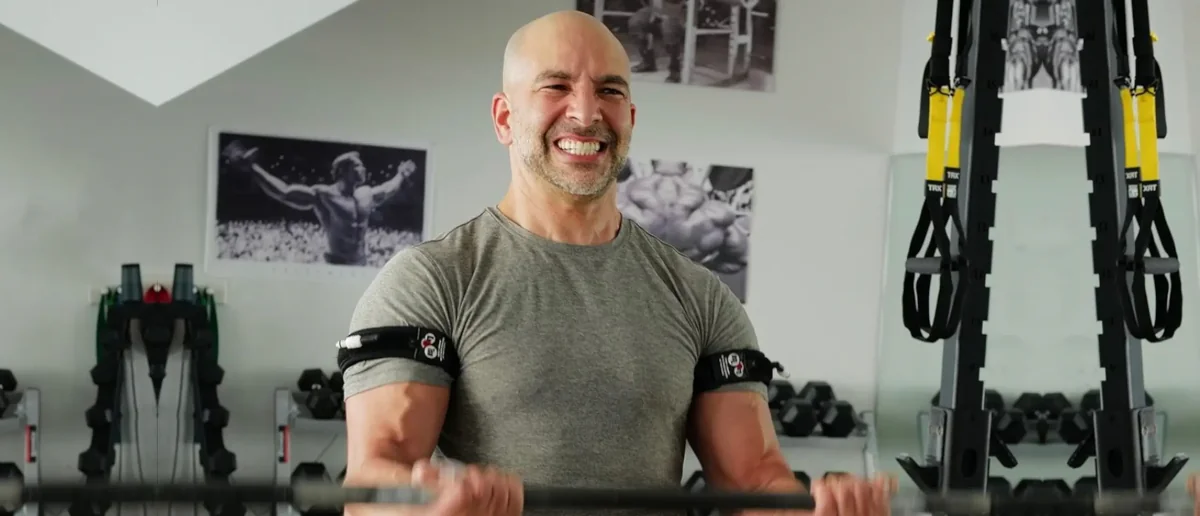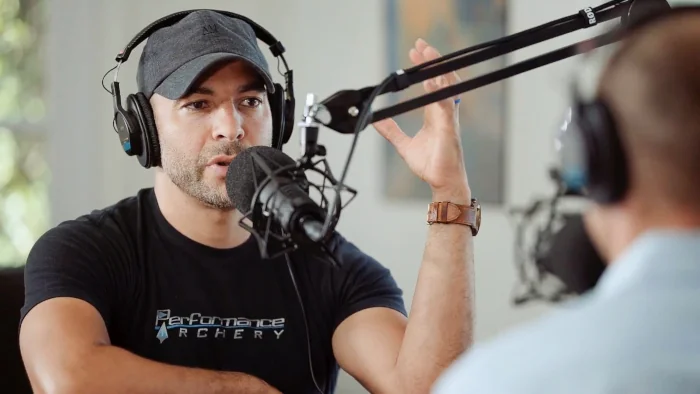Peter Attia’s diet has varied over the years.
As of now (via his February AMA), he explains his goals are to:
- Increase muscle mass
- Reduce body fat
This is because Peter believes that maintaining muscle mass is important for longevity, and staying physically active late into life.
His approach to hitting his goals are:
- Eating 1 gram of protein per lb of body weight. In metric that’s 2.2 grams per kg.
- Eating 2700 – 2800 calories per day
- Tracking protein and calories via Layne Norton’s app called Carbon
This equated to around 45 to 50 grams of protein 4x per day, which he describes as looking like:
- Breakfast – usually 8 eggs (4 whole, 4 egg whites) with toast and butter
- Protein shake – He takes a shake comprised of 24 ounces of almond milk, 50 grams of protein (read more about his protein powder preferences), and frozen fruit.
- Lunch – typically a chicken salad with a variety of vegetables, olive oil and balsamic vinegar
- Dinner – varies a lot – but he finds tracking with the app helps him to stay within his goals.
- Supplements – he continues to take supplements like omega-3s, magnesium, etc. See this post for more info.
RE: Carbohydrates
For diets such as keto, carnivore and high fat low carb, there is a focus on eliminating or reducing carbohydrates. Indeed, below you’ll read that Peter previously used a ketogenic diet for 3 years (circa 2011 to 2014).
However, currently it appears that he’s prioritizing:
- 1 gram of protein per lb of bodyweight
- 2,700 to 2,800 calories per day.
Therefore, as long as he hits those two metrics, it appears that carbohydrates are “fair game” in his diet.
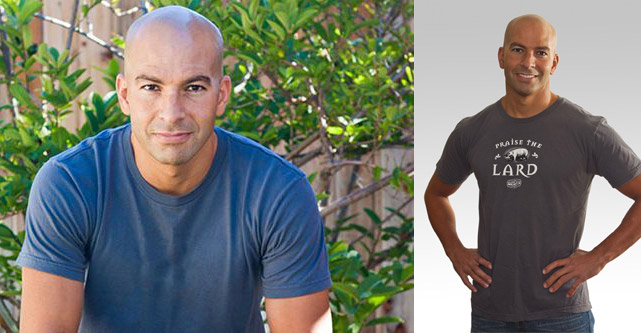
Past Diets
Peter hasn’t always eaten this way. Below we’ll look at some of previous diet phases…
Time Restricted Feeding – circa 2014 – 2020
During this period, Peter’s diet was not:
- Ketogenic
- Vegetarian, vegan or pescatarian
- Dairy or gluten free
He simplified it into 3 “rules”:
- Time Restricted Feeding (TRF)
- Avoid Sugars, High Fructose Corn Syrup & Junk Food
- No Restriction on Healthy Starches and Vegetables
1) Time Restricted Feeding
At the low end, Peter was fasting between 14 – 16 hours each day, and at the high end, he was fasting between 20 – 22 hours.
This meant he fasted for most of the day, and consumed all his calories in a tight window between the afternoon and evening.
From what he describes, this meant some days he ate one big meal per day.

2) Avoid Sugars, HFCS & Junk Food
Peter made sure to avoid foods containing sucrose (sugar) and high fructose corn syrup (HFCS). These are often in non-obvious places such as sauces and dressings, for food that would otherwise be healthy.
He would also avoid obvious junk foods such as potato chips, cookies, pastries etc.

3) No Restriction on Healthy Starches & Vegetables
Peter didn’t place restrictions on healthy starches such as rice and potatoes. Likewise, no restrictions on vegetables.



What did Peter’s meals look like?
If Peter was eating once per day, he consumed about 3,000 calories in 1 meal. It was usually a combination of:
- A huge salad – Such as lettuce, tomatoes, cucumbers, carrots, mushroom, Extra Virgin Olive Oil (EVOO), freshly squeezed lemon, salt, and pepper
- Protein – Rotating through salmon, pork, steak or game meat
- Carbohydrates – A serving of rice, potatoes or sweet potato
The above meal is an example taken from a podcast with Kevin Rose. He wasn’t always eating 1 meal per day, but generally aimed to delay eating until at least lunch time / early afternoon.
It may also be of interest to peek at this post I wrote on Peter’s nutrition framework. Which provides a nice mental model for the way he thinks about diet.
Water Fasting
During the period from 2014 to 2020 there were stretches where he would water fast each month.
Research by Valter Longo and others show fasting benefits include:
- Decrease in visceral fat (the “bad” fat located around the organs, as opposed to subcutaneous fat, that’s visible under the skin)
- Increase in cellular cleanup (autophagy) around day 3
- Lowered IGF-1
- Decreased blood glucose and insulin
For a few years, until the end of 2019 Peter was doing a 7 day fast once every 3 months. His process comprised of:
- 7 days of a ketogenic diet prior to the water-only fast
- 7 days of water only fasting
- 7 further days of keto after the fast
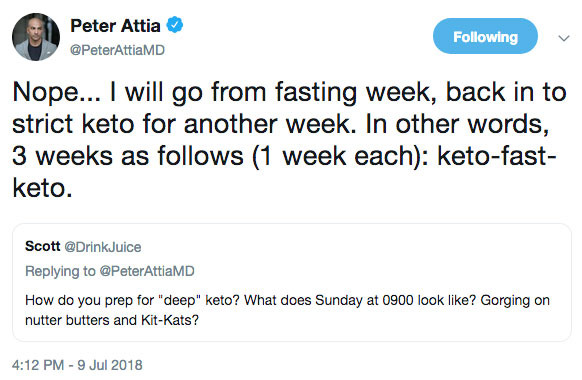
However, for 2020 he moved to a 3 day fast once per month, without the strict keto diet either side. He made the switch for 2 key reasons:
- 7-day fasts were intrusive on life.
- During the 7-day fast, it was typically day 2 where he saw a big shift in his glucose/ketone levels. With glucose normalising, and ketone production ramping up. Therefore he anticipated 3-day fasts would capture some of this important metabolic change.
Peter found the 3-day fasts:
- Significantly easier than 7-days + he never felt as though he’s “dragging” like he did at points on 7-day fasts
- Allow for a higher exercise tolerance, due to less glycogen depletion. Meaning he didn’t have to dial back the volume/intensity of his workouts each quarter
During the fasting period it’s water only. – and for Peter this meant plenty of his favorite carbonated water drink – Topo Chico:

Supplements whilst fasting?
In AMA 11 Peter discussed his approach to supplements whilst fasting. He took:
- Magnesium – he takes magnesium oxide and Magnesium L-threonate when not fasting. When fasting, he switches out the magnesium oxide for a slow absorbing form of magnesium, then continues to take Magnesium L-Threonate.
- Methylated B vitamin complex – Peter takes these all the time, fasting or not fasting.
He stopped taking:
- EPA/DHA – he takes about 2g daily of EPA/DHA normally, but whilst fasting he stops. Skipping the ~20 calories or so it would contain.
- Rapamycin – He stops taking rapamycin whilst fasting because he is already getting natural mTOR inhibition via the fast.
- Metformin – He doesn’t take metformin anymore, however when he was taking it, he would stop whilst fasting.
- Sodium – on his 7 day fasts he would supplement 2 grams of sodium via bouillon. However, for 3-day fasts he doesn’t add sodium and feels good. But suggests that others may benefit from sodium whilst fasting, especially if they don’t fast regularly.
The Ketosis Years – circa 2011 to 2014
For 3 years, between 2011 and 2014 Peter ate a 100% ketogenic diet.
This was back before ketogenic diets really hit the mainstream, as visualized on Google Trends:
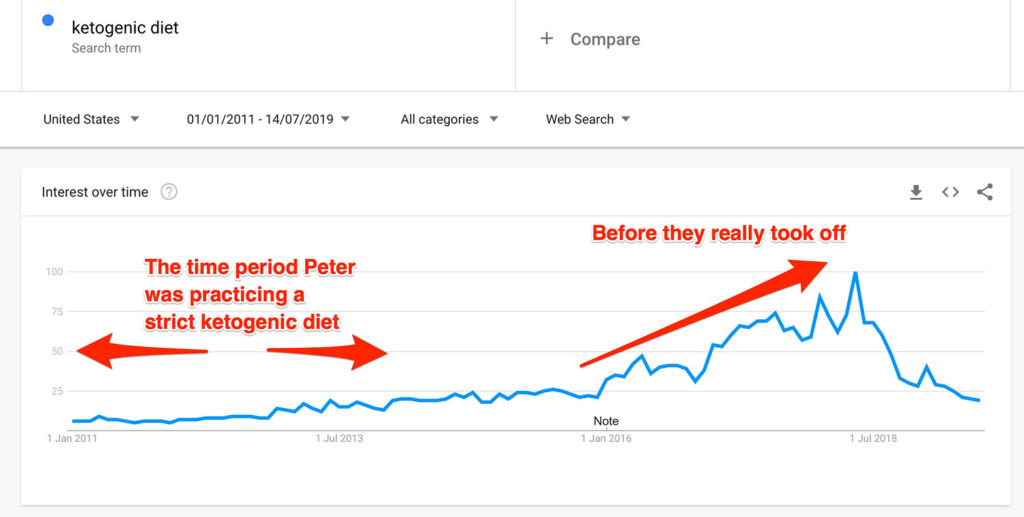
Peter was practicing the diet when it was relatively unknown, and thus he wrote a few interesting articles to help raise awareness on the subject:
- Ketosis – advantaged or misunderstood state? (Part I)
- The interplay of exercise and ketosis (Part II)
- What I actually eat (circa Q4 2011) – this post was full of keto friendly foods, but is not reflective of his current diet
He explains that whilst he no longer eats keto, it’s not because he lost confidence in its efficacy, noting:
“I was leaner, and more mentally and physically fit during this three year period [ketogenic diet] than during any other period of time as an adult, and my biomarkers were as good as they had ever been.”
For more information on Peter’s transition away from keto, see:
Final Words
Hopefully the above gives you a window into Peter’s diet (past & present). I’ve also written about Peter’s supplements and exercise routines:
If you’ve got any questions or comments, please leave them below.
Lastly, this seems like a good opportunity to mention Peter’s subscription service – with which I have zero affiliation – but am enthusiastic about.
For an annual fee, it gives you access to his detailed show notes & “Qualys” series, which are short (<10 minute) highlights from the back catalog of podcasts. It’s a great way to support Peter’s podcast.
